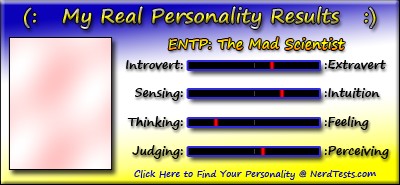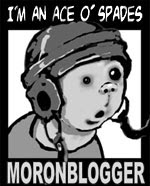One of the aspects of Christianity (and a number of other religions / belief systems) that has received a lot of flak and press ever since Charles Darwin came up with his infamous work on the Origin of Species is the Creation story, or as I like to put it, the Reason We're Here.
Darwin may not have started out this way, nor perhaps would he have gone as far as he did if he knew what we now know, and it is certainly not beyond the realm of possibility that he would not have approved of the current state of affairs as regards origin science. Nevertheless, the fact remains that he popularised the idea of (macro) evolution, which has been tweaked and played with and refined until it has become what it is today. Now, I used to be an evolutionist, so to speak, but my viewpoint on this matter has changed, and I am now comfortable with calling myself a Young Earth Creationist. Yes, I am one o'them YECs.
Let's clear up some terminology first, because as with many other issues, much confusion and flaming can be avoided or minimised with making clear the definitions of the argument. A lot of people refer to the Theory of Evolution, but really, this is a misnomer. Evolution is a model; nothing more, nothing less. A theory is something provable (and falsifiable, of course), something concrete that you can work with, and usually attached to an accompanying mathematical formula. Evolution is nowhere so clear cut. The next term we really need to clear up is 'evolution'. Macroevolution, which is what I'm talking about here, is generally understood to refer nothing less than the Grand Unified Theory of How All Living Things came about through {some random, undirected, veeerrryyy long-term process} (currently genetic mutations leading to beneficial traits that can be acted upon by the pressures of natural selection) that enabled the expansion of some progenitor life form into the myriad species, genus, family, order etc before us today. What a mouthful, isn't it? Here are the takeaway points, though - firstly, it is generally supposed to link all current life forms back to a single unicellular organism some few billion years ago. Secondly, the process is random and undirected. Thirdly, the mutations are beneficial and lead to new organs. That's all you need to remember about evolution.
Why don't I believe in it any more? Why have I switched from this model to the YEC model? Well, okay, let's take it a step at a time. Origins science is a misnomer all by itself. The scientific principle by which we try to understand the natural world around us is a logical one of cause and effect. You observe an effect, postulate a cause for that effect (hypothesis), devise a method of proving or disproving your hypothesis (experiment), and you refine until you have something that is reliably repeatable to provide you the results your hypothesis calls for. Then, and only then, do you have a theory - when other people can take your work, plug in new values, and within experimental error have the numbers your theory predicts they should get.
You can't do that with origins science. You cannot prove that chimpanzees and humans evolved from the same proto-primate, nor can you prove they were created separately by God. We weren't there to see it happen! What we do have are a bunch of observations - and all you can do with observations is form a model. Neither evolution, or OEC, or YEC, or for that matter panspermia, are theories; they're all models.
That doesn't answer the question. What does is that evolutionists require me to believe the following sequence of events happened in a completely undirected fashion and by random;
0. The complex, error-tolerant encoding systems of RNA and DNA
1. The move from non-life to life (abiogenesis)
2. The move from unicellular to multicellular organisms
3. The move from asexual reproduction to sexual reproduction
4. The specialisation of cells into various tissues and organs
5. The move from exoskeleton to endoskeleton
6. The move from cold-blooded to warm-blooded
...
X. The move from ground travel to wings
X + 1. The production of irreducibly complex structures
...
and so on.
Now, remember, none of these have been observed to occur. There is no eyewitness evidence, nor for that matter, is there sufficient forensic and circumstantial evidence for this. Yes, evolutionary biologists have come up with possible explanations for some of the above, but (a) not all and (b) while any one of them may be plausible, the sheer number that need to happen is ludicrous.
This is what nails the lid of the coffin shut for good, though. The number one underlying process that powers all these explanations? That's mutation - which is the only way genetic code can change, because meiosis and mitosis have very powerful error-correction built in. And not once, not once, has mutation managed to come up with a new structure. Modifications of existing structures, yes. Co-opting of structures from other life forms, sometimes. But inventing cone cells from rod cells or vice versa? No.
The field of genetic manipulation is known as genetic engineering. It is a very, very young field, and genetic engineers work with biological constructs rather than physical ones, or chemical ones, or digital ones. We now know that the 'simplest' biological organism is far, far more complex, with more moving parts and interactions than anything humans have ever put together. In fact, the closest metaphor we have is in the field of software engineering, because that's what genes are; they're software programs. How close is the metaphor? We're using algorithms based on genetic interactions in software engineering.
The fear of GM foods is, put in software terms, that if you introduced a feature into an existing software set, you run the real risk of also introducing bugs. No software developer would ever let a new feature set leave the dev lab without thorough regression testing, and genetic engineers should take that into account as well.
Here's the thing. Engineers work with things that are designed. The Information Technology field, including software engineering, is based on the fact that somebody came up with the programming languages, compilers, interpreters, storage systems and processors with which you ply your art. There is a certain elegance in the way living creatures are put together that collectively forms a giant flashing beeping sign pointing at the Great Software Developer. We talk about the design of the hand, or the eye, or the blood-clotting system, because there is no better word to describe what we're dealing with. A design implies a designer always... except when dealing with God, apparently.
Even the most strident atheist evolutionary biologist will not deny that life appears to have been designed. The simplest answer and solution to why this is so, well, is because life was designed. So I believe, and so I profess.











